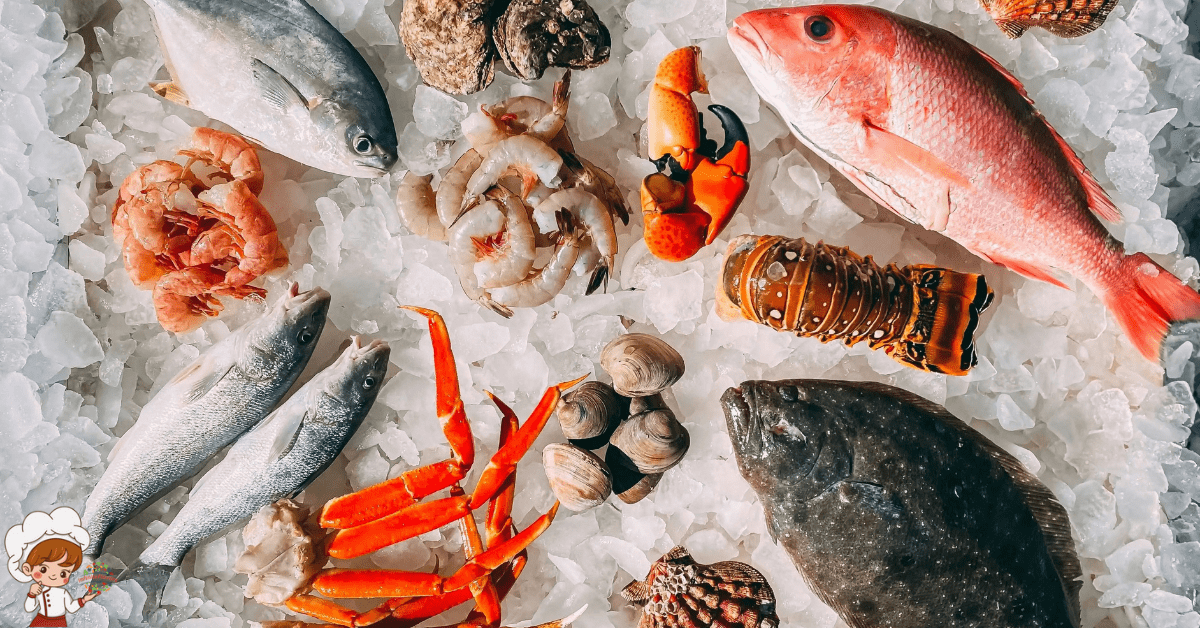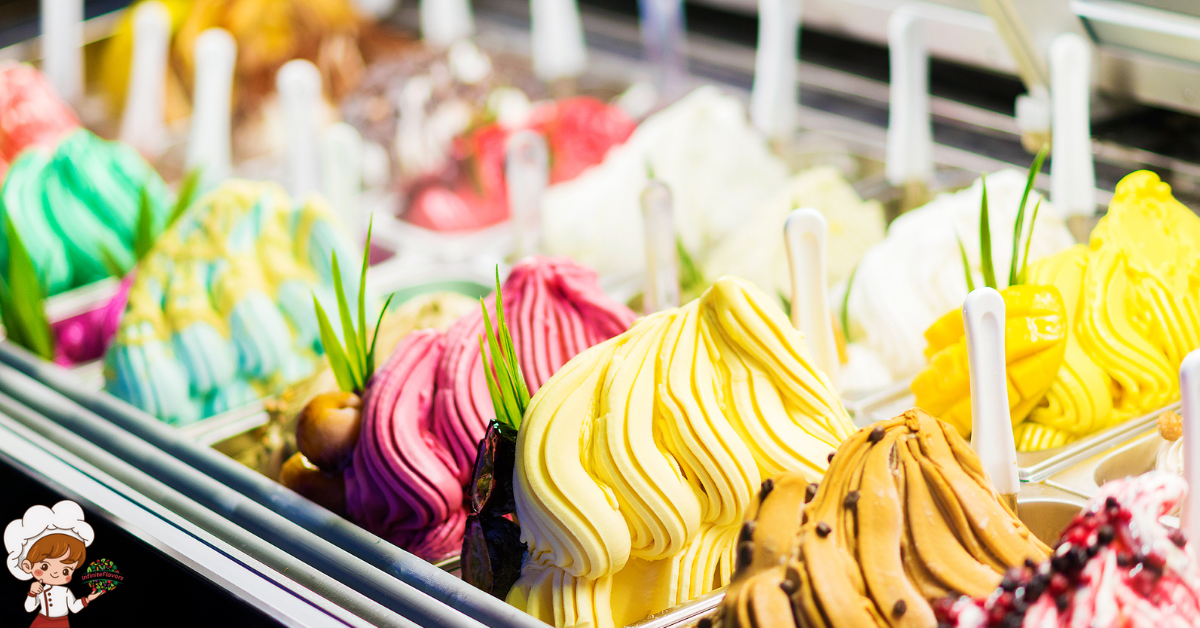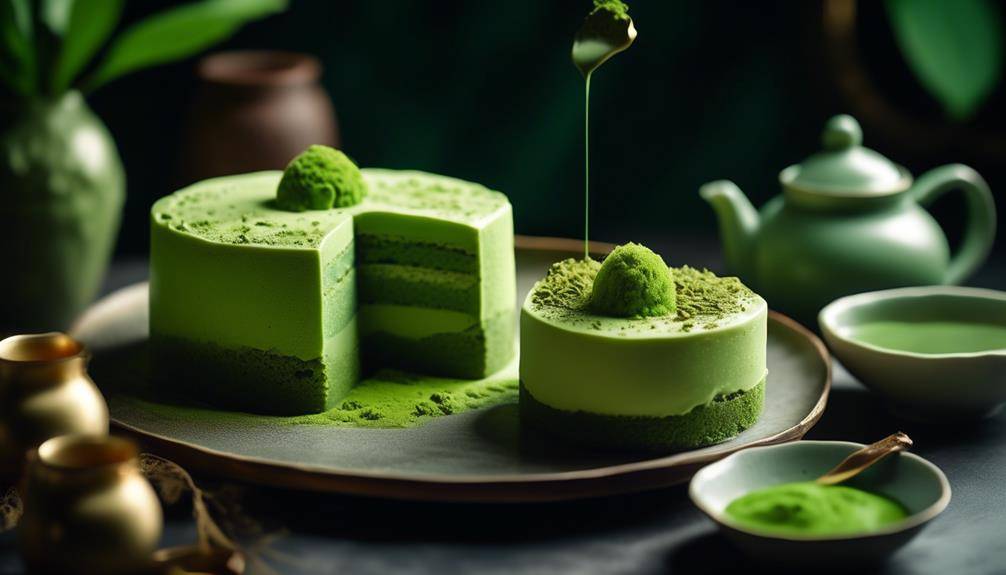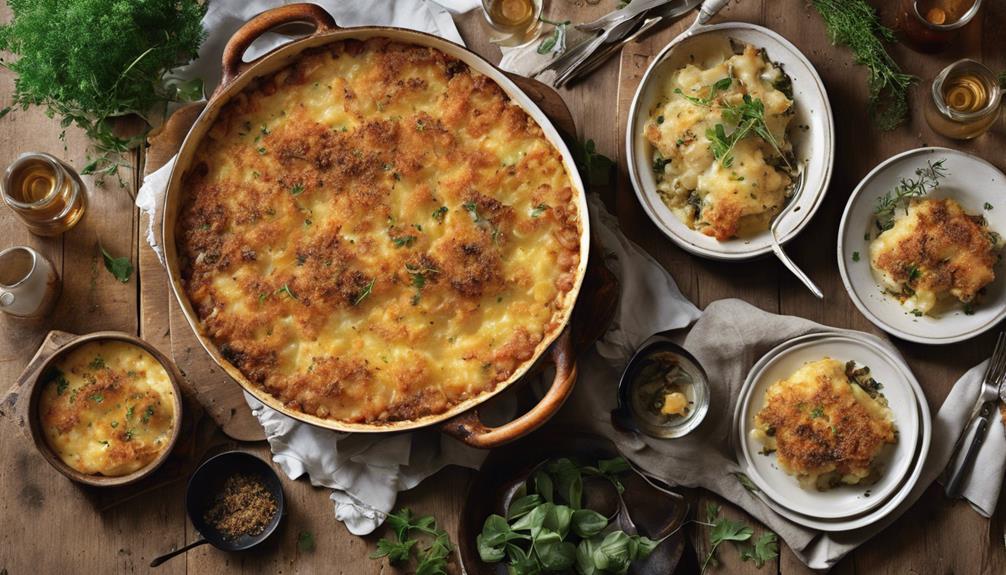Beginner’s Guide To Easy Seafood Preparation

Easy Seafood Preparation; Are you tired of feeling like a fish out of water when it comes to preparing seafood? Look no further, because this beginner’s guide is here to make your culinary journey a breeze. From choosing the freshest catch to mastering simple techniques, we will walk you through each step with ease. Whether you’re a novice in the kitchen or simply looking to expand your cooking repertoire, this guide will equip you with the essential knowledge and skills to create delicious seafood dishes that will leave your taste buds begging for more. So, grab your apron and get ready to dive into the world of easy seafood preparation.
Choosing the Freshest Seafood
When selecting seafood, it is crucial to choose the freshest options available to ensure the best quality and taste in your dishes. To determine the freshness of seafood, there are several indicators to look out for. The first thing to examine is the appearance of the seafood. Fresh fish should have bright and clear eyes, not cloudy or sunken. The gills should be vibrant red, not brown or gray. Additionally, the skin should be shiny and moist, not dull or dry. Another important indicator is the smell. Fresh seafood should have a clean and briny scent, reminiscent of the ocean. If there is a strong fishy or ammonia-like odor, it is a sign that the seafood is not fresh.
Now that you know what to look for, where should you go to find the freshest seafood? The best places to buy seafood are typically local fish markets and reputable seafood vendors. These establishments often have a direct connection to the source, ensuring that the seafood is as fresh as possible. They also have knowledgeable staff who can provide information on the origin and quality of the seafood. Farmers markets are another excellent option as they often have fresh catches brought in directly from nearby waters.
When shopping at supermarkets, it is essential to check the packaging and labels for information on the source and date of the seafood. Look for wild-caught options and avoid any products that have been previously frozen or have expired. By following these tips and shopping at trusted sources, you can guarantee the freshest seafood for your culinary creations.
Understanding Different Seafood Varieties
Now that you’ve learned how to choose the freshest seafood, it’s time to dive into understanding the different varieties available. There are numerous types of seafood to explore, from fish like salmon and tuna to shellfish like shrimp and lobster. Each variety has its own unique flavor profile, making them suitable for different cooking methods. Understanding these varieties will help you make informed choices when it comes to preparing and enjoying seafood dishes.
Types of Seafood
Understanding the different varieties of seafood is essential for mastering the art of easy seafood preparation. Seafood comes in a wide range of types, each with its own unique flavor and texture. Here are four popular types of seafood that you can experiment with in your cooking:
- Salmon: This fatty fish is known for its rich, buttery flavor and can be grilled, baked, or smoked to perfection. It is often used in dishes like salmon fillets, salmon burgers, and salmon sushi rolls.
- Shrimp: Shrimp is a versatile seafood that can be cooked using various techniques such as boiling, grilling, or stir-frying. It is a popular choice for dishes like shrimp scampi, shrimp curry, and shrimp cocktail.
- Cod: Cod is a mild-flavored white fish that can be baked, broiled, or pan-fried. It is commonly used in dishes like fish and chips, fish tacos, and fish stews.
- Scallops: Scallops have a delicate, sweet flavor and can be seared, grilled, or sautéed. They are often featured in dishes like bacon-wrapped scallops, scallop ceviche, and scallop risotto.
Cooking Methods
To expand your culinary repertoire and enhance your seafood preparation skills, it is crucial to familiarize yourself with the various cooking methods that complement different seafood varieties. Cooking techniques play a significant role in preserving the delicate flavors and textures of seafood. When it comes to seafood preparation, the cooking method you choose can make or break the dish. Grilling is an excellent option for firm fish like salmon or tuna, as it adds a smoky flavor and beautiful grill marks.
Steaming is ideal for delicate shellfish like clams or mussels, as it maintains their juicy tenderness. For frying, opt for crispy batters that pair well with shrimp or calamari. Lastly, poaching is perfect for white fish like cod or halibut, as it gently cooks the fish in flavorful liquids. By mastering these seafood preparation steps, you’ll be able to create delicious and perfectly cooked seafood dishes every time.
Flavor Profiles
Different seafood varieties offer unique flavor profiles that can be explored and appreciated through culinary exploration. Understanding the different flavors of seafood can help you create delicious and well-balanced dishes. Here are some key points to consider when it comes to flavor profiles:
- Seafood pairing suggestions: Certain seafood varieties are known to complement each other in flavors. For example, pairing delicate white fish with tangy citrus fruits can enhance the overall taste. Similarly, the richness of salmon can be balanced with a creamy sauce or a squeeze of lemon.
- Exploring different seafood marinades: Marinades can infuse flavors into seafood, enhancing its natural taste. Experiment with marinades made from ingredients like garlic, ginger, soy sauce, and herbs to bring out the best in your seafood dishes.
- Matching flavors with cooking methods: Each seafood variety reacts differently to different cooking methods. For instance, delicate fish like sole or flounder is best suited for quick pan-frying, while more robust seafood like shrimp or scallops can be grilled or broiled to bring out their natural sweetness.
- The influence of regional cuisines: Different cultures have their own unique ways of preparing and seasoning seafood. Exploring different regional cuisines can introduce you to new flavor combinations and techniques that can elevate your seafood dishes to new heights.
Essential Kitchen Tools for Seafood Preparation
When preparing seafood in your kitchen, having the right tools is essential for efficient and precise execution. Whether you’re a seafood enthusiast or a beginner, having a well-equipped kitchen can make all the difference in your cooking techniques and seafood presentation. Here are some essential kitchen tools that will help you prepare seafood with ease.
- Seafood Knife: A sharp, flexible blade is necessary for cutting through the delicate flesh of fish and shellfish. A seafood knife allows you to make clean, precise cuts without damaging the texture or presentation of the seafood.
- Fish Spatula: A fish spatula is a thin, flexible spatula with a wide, slotted head. It is designed specifically for flipping and serving delicate seafood like fish fillets. The slots allow excess oil or liquid to drain away, ensuring that your seafood remains crispy and flavorful.
- Seafood Scissors: Seafood scissors are designed for cutting through the hard shells of crustaceans like crabs and lobsters. They have strong, serrated blades that make it easy to crack open shells without damaging the meat inside.
- Fish Scale Remover: Scaling fish can be a messy task, but with a fish scale remover, you can remove scales quickly and efficiently. This tool features small, serrated edges that easily scrape away scales, leaving your fish clean and ready for cooking.
- Seafood Tweezers: Seafood often contains small bones or pin bones that can be difficult to remove. Seafood tweezers have a fine, pointed tip that allows you to easily grasp and remove any unwanted bones, ensuring a safe and enjoyable dining experience.
Properly Cleaning and Deveining Shrimp
When it comes to properly cleaning and deveining shrimp, there are two main points to focus on: removing the shrimp shells and removing the shrimp veins. To remove the shells, start by gently pulling them off starting at the head and working your way down to the tail. To remove the veins, use a sharp knife or a deveining tool to make a shallow cut along the back of the shrimp and then carefully lift out the dark vein. By following these steps, you’ll have perfectly cleaned and deveined shrimp ready to be cooked.
Removing Shrimp Shells
To properly clean and devein shrimp, begin by gently grasping the shrimp with one hand and carefully peeling back the shell, starting from the underside near the tail. Follow these steps to ensure you remove the shrimp shells effectively:
- Hold the shrimp firmly but gently to avoid damaging the delicate flesh.
- Start peeling the shell by grabbing the legs near the tail and pulling them off.
- Continue to peel the shell by working your way up towards the head, removing it completely.
- Once the shell is removed, rinse the shrimp under cold water to wash away any remaining debris.
Removing Shrimp Veins
To properly clean and devein shrimp, it is essential to remove the shrimp veins as part of the cleaning process. The veins, also known as the digestive tract, run along the back of the shrimp and can sometimes contain grit or sand. Removing these veins not only improves the appearance of the shrimp but also ensures a better-tasting dish. To remove the shrimp veins, start by making a shallow incision along the back of the shrimp using a sharp knife.
Gently lift the vein out using the tip of the knife or your fingers and discard it. Rinse the shrimp under cold water to remove any remaining debris. Properly cleaning and deveining shrimp is just as important as removing shrimp shells or using simple techniques for filleting fish. By following these steps, you’ll be on your way to preparing delicious, clean shrimp for your next seafood dish.
Simple Techniques for Filleting Fish
For a precise and efficient way to fillet fish, consider using the following simple techniques. Fish filleting techniques can vary depending on the type of fish you are working with, but these basic steps will give you a good starting point.
- Start by choosing the right tools for filleting fish. A sharp fillet knife is essential for clean and precise cuts. Look for a knife with a flexible and thin blade to easily maneuver around the bones. Additionally, a cutting board with a non-slip surface will help keep the fish in place while you work.
- Begin by scaling the fish. Hold the fish firmly by the head and scrape the scales off using a fish scaler or the back of a knife. Work from the tail towards the head, making sure to remove all the scales.
- Make a clean cut behind the gills to remove the head. This step is optional, but removing the head can make the filleting process easier. Simply position the knife behind the gills and slice through the flesh until you reach the backbone.
- With the fish lying flat on the cutting board, make a small incision behind the pectoral fin. Slide the knife along the backbone, applying gentle pressure to separate the flesh from the bones. Continue cutting along the length of the fish, following the natural contour of the bones until you reach the tail.
Mastering the Art of Searing Scallops
To achieve the perfect sear on your scallops, start by making sure you have chosen the right scallops. Opt for dry-packed scallops instead of wet-packed ones, as wet-packed scallops tend to release more moisture and can lead to a less desirable sear. Look for scallops that are firm, translucent, and have a sweet, briny aroma.
Perfecting the Sear
Achieving the perfect sear on scallops requires a careful balance of heat, timing, and technique. Here are four key steps to help you master the art of searing scallops:
- Start with dry scallops: To achieve a beautiful golden crust, it’s essential to pat the scallops dry with paper towels. Moisture on the surface can prevent a proper sear.
- Preheat your pan: A hot pan is crucial for creating a caramelized sear. Heat a non-stick skillet over medium-high heat until it’s almost smoking. This will ensure a quick and even cooking process.
- Use a high smoke point oil: Opt for oils like vegetable, canola, or grapeseed oil, as they can withstand high heat without burning. Add a thin layer of oil to the hot pan before adding the scallops.
- Cook in batches: Avoid overcrowding the pan, as it can lead to steaming instead of searing. Cook the scallops in batches, leaving enough space between them to ensure they brown evenly.
Choosing the Right Scallops
Choosing the perfect scallops is crucial when it comes to mastering the art of searing them to perfection. To start, look for scallops that are fresh and firm, with a sweet and briny aroma. It’s important to choose dry-packed scallops, which are not treated with any preservatives or additives. These scallops will sear beautifully and develop a golden brown crust. Wet-packed scallops, on the other hand, tend to release excess moisture when cooked, resulting in a less desirable sear.
When it comes to cooking techniques, scallops can be seared in a hot skillet with a little oil or butter for a couple of minutes on each side. They can also be grilled or broiled for a delicious smoky flavor. In addition to their delicious taste, scallops are also a great source of protein and omega-3 fatty acids, making them a nutritious choice for seafood lovers.
Quick and Easy Marinating Tips for Seafood
When marinating seafood, it is important to use a combination of flavors that will enhance the natural taste of the fish or shellfish. Here are some quick and easy marinating tips to help you elevate the flavors of your seafood dishes:
- Choose the right marinade: There are countless marinades available, but for seafood, it’s best to opt for ones that are light and acidic. Citrus-based marinades, such as lemon or lime juice, work well to tenderize the fish while adding a refreshing tang. You can also try a simple marinade of olive oil, garlic, and herbs like thyme or parsley.
- Don’t marinate for too long: Seafood is delicate and can easily become over-marinated, resulting in a mushy texture. It is recommended to marinate seafood for no more than 30 minutes to an hour. Shrimp and scallops, being smaller and more delicate, should only be marinated for about 15 to 30 minutes.
- Use a resealable bag or shallow dish: To ensure that the marinade coats the seafood evenly, place it in a resealable bag or a shallow dish. This allows you to easily turn the seafood and distribute the marinade evenly. Avoid using metal containers as they can react with the acidic ingredients in the marinade.
- Pat dry before cooking: Before cooking the marinated seafood, make sure to pat it dry with paper towels. Excess marinade can cause the seafood to steam instead of sear, resulting in a less desirable texture. Drying the seafood also helps in achieving a beautiful caramelized crust when grilling or pan-searing.
Delicious Seafood Seasoning Combinations
To elevate the flavors of your marinated seafood dishes, it is essential to explore the world of delicious seafood seasoning combinations. Whether you are grilling, broiling, or baking your seafood, the right seasonings can take your dish from ordinary to extraordinary. Here are some delicious seasoning ideas to try.
For a classic and versatile combination, try mixing together garlic powder, paprika, salt, and black pepper. This simple blend works well with a variety of seafood, such as shrimp, salmon, or white fish. The garlic adds a savory note, while the paprika brings a subtle smokiness to the dish.
If you want to add some heat to your seafood, consider using a Cajun seasoning blend. This combination typically includes ingredients like cayenne pepper, paprika, garlic powder, and onion powder. The spices in Cajun seasoning create a bold and spicy flavor that pairs well with shrimp, catfish, or crawfish.
For a more exotic flavor profile, try using a Mediterranean-inspired seasoning blend. This could include a mix of dried herbs such as oregano, thyme, and basil, along with garlic powder, lemon zest, and a touch of salt. This combination works well with a variety of seafood, from grilled octopus to roasted branzino.
When it comes to pairing seafood with wine, there are a few general guidelines to keep in mind. For lighter seafood dishes, such as grilled shrimp or steamed mussels, a crisp white wine like Sauvignon Blanc or Pinot Grigio can enhance the flavors. For richer and more flavorful seafood, such as grilled salmon or lobster, a medium-bodied white wine like Chardonnay or a light red like Pinot Noir can complement the dish well.
Healthy and Flavorful Seafood Grilling Ideas
Grilling seafood is a healthy and flavorful cooking method that brings out the natural flavors of the fish while adding a delicious smoky char. When it comes to grilling fish, there are endless possibilities to explore. Here are four seafood grilling ideas that are not only delicious but also easy to prepare:
- Grilled Lemon Herb Salmon: Marinate fresh salmon fillets in a mixture of lemon juice, minced garlic, chopped herbs like thyme and rosemary, olive oil, salt, and pepper. Grill the salmon over medium heat for about 4-5 minutes per side until it is cooked through and has a slightly charred exterior. The citrusy flavors combined with the herbs create a delightful and refreshing taste.
- Grilled Shrimp Skewers: Thread large shrimp onto skewers and brush them with a mixture of olive oil, minced garlic, lemon juice, and paprika. Grill the shrimp over high heat for about 2-3 minutes per side until they turn pink and slightly charred. These succulent shrimp skewers make a perfect appetizer or main course.
- Grilled Tuna Steak: Season tuna steaks with a mixture of soy sauce, ginger, garlic, and sesame oil. Grill the tuna over high heat for about 2-3 minutes per side for a medium-rare doneness. The smoky flavors from the grill enhance the meaty texture of the tuna and create a mouthwatering dish.
- Grilled Halibut with Mango Salsa: Season halibut fillets with salt, pepper, and olive oil. Grill the halibut over medium-high heat for about 4-5 minutes per side until it is cooked through and has a nice char. Serve the grilled halibut with a refreshing mango salsa made with diced mango, red onion, jalapeno, cilantro, lime juice, and a pinch of salt. The combination of the grilled fish and the sweet and tangy salsa is simply irresistible.
These grilled fish recipes demonstrate the versatility and deliciousness of seafood when cooked on the grill. By using simple seafood grilling techniques, you can create healthy and flavorful dishes that will impress your guests and satisfy your taste buds. So fire up the grill and start experimenting with different seafood options to discover your favorite flavors.
Steaming Seafood: A Foolproof Method
Steaming seafood is a foolproof method that locks in moisture and preserves the natural flavors of the fish, resulting in tender and succulent dishes. When it comes to steaming seafood, there are a few foolproof techniques that will ensure you achieve delicious results every time.
Firstly, it’s important to choose the right equipment for steaming. A steamer basket, which fits inside a pot with a tight-fitting lid, is ideal for this cooking method. The basket allows the steam to circulate around the seafood evenly, ensuring even cooking.
To begin steaming, fill the pot with a couple of inches of water and bring it to a simmer. Place the seafood in the steamer basket, making sure not to overcrowd it. This allows the steam to circulate freely, ensuring that the seafood cooks evenly. Cover the pot with the lid and let the seafood steam for the recommended cooking time, depending on the type and thickness of the seafood.
The benefits of steaming seafood are numerous. Firstly, steaming is a healthy cooking method that requires little to no added fats or oils. This makes it a great option for those watching their calorie intake or following a heart-healthy diet. Additionally, steaming preserves the natural flavors of the seafood, allowing you to truly taste the freshness of the fish.
Baking Seafood to Perfection
When it comes to seafood preparation, another excellent method that guarantees delicious results is baking, which enhances the natural flavors and textures of the fish without the need for excessive fats or oils. Baking seafood is a simple and convenient way to cook your favorite fish dishes to perfection. Here are four key points to keep in mind when baking seafood:
- Baking Temperature: Preheat your oven to the appropriate temperature for the specific seafood you are cooking. For most fish, a temperature of 375°F (190°C) works well. Adjust the temperature as needed for thicker cuts of fish or different types of seafood.
- Cooking Time: The cooking time for baked seafood will vary depending on the thickness of the fish and the desired level of doneness. As a general rule, bake fish for about 10 minutes per inch of thickness. Keep a close eye on the fish and check for doneness by inserting a fork into the thickest part of the fish. It should easily flake apart and be opaque in the center.
- Seasoning: Before baking, season your seafood with your favorite herbs, spices, or marinades to enhance the flavors. Popular options include lemon juice, garlic, dill, and paprika. You can also add a drizzle of olive oil or a pat of butter for added moisture and richness.
- Baking Vessel: Choose an appropriate baking dish or sheet pan that is large enough to hold the seafood without overcrowding. This allows for even cooking and ensures that the fish cooks evenly. You can line the baking dish with parchment paper or foil for easier cleanup.
Easy Seafood Stir-Fry Recipes
If you’re looking for a quick and flavorful way to enjoy seafood, why not try your hand at some easy seafood stir-fry recipes? Stir-frying is a fantastic cooking technique that allows you to lock in the natural flavors and textures of seafood while infusing it with a delicious blend of seasonings and aromatics. Whether you’re a seafood lover or just looking to incorporate more seafood into your diet, these easy seafood stir-fry recipes are sure to impress.
One popular option is easy seafood pasta stir-fry. This dish combines the best of both worlds, with tender seafood and al dente pasta tossed together in a flavorful sauce. You can use a variety of seafood options such as shrimp, scallops, or even a mix of both. Simply cook the seafood and pasta separately, then combine them in a pan with your choice of vegetables, garlic, and a splash of soy sauce or lemon juice for a burst of freshness.
Another quick and simple seafood stir-fry option is seafood tacos. This recipe takes the classic taco concept and gives it a seafood twist. Start by sautéing your favorite seafood, such as fish or shrimp, with a blend of spices like cumin, chili powder, and paprika. Once cooked, serve the seafood in warm tortillas and top with your favorite taco toppings like shredded lettuce, diced tomatoes, and a squeeze of lime.
These easy seafood stir-fry recipes are perfect for busy weeknight dinners or when you’re craving a flavorful meal without spending hours in the kitchen. With just a few simple ingredients and some basic cooking techniques, you can create a delicious seafood stir-fry that will leave you satisfied and wanting more. So why not give it a try and elevate your seafood dishes to a whole new level of deliciousness?
Tips for Properly Storing Seafood
To ensure that your seafood stays fresh and maintains its quality, it is important to know some tips for properly storing seafood. Whether you have leftovers from a delicious seafood meal or you want to stock up on seafood for future use, following these guidelines will help you keep your seafood in the best condition possible.
Here are four important tips for properly storing seafood:
- Freezing seafood: When freezing seafood, it is crucial to use proper packaging to prevent freezer burn. Wrap the seafood tightly in plastic wrap or aluminum foil, ensuring there are no air pockets. Then, place it in a freezer-safe bag or container, removing as much air as possible before sealing. Label the packaging with the date and type of seafood to keep track of its freshness. Additionally, you can consider vacuum-sealing your seafood for even better preservation.
- Choosing the right freezer temperature: Set your freezer temperature to 0 degrees Fahrenheit (-18 degrees Celsius) or below. This low temperature helps maintain the quality and texture of the seafood for a longer period. Be sure to regularly check and maintain your freezer temperature to ensure optimal freshness.
- Thawing seafood: To properly thaw seafood, it is best to do it gradually in the refrigerator. Place the frozen seafood in a container or on a plate to catch any drips and prevent cross-contamination. Allow enough time for the seafood to thaw completely, which may take several hours or overnight depending on the size and type of seafood. Avoid thawing seafood at room temperature or using hot water, as this can lead to bacterial growth and compromise the quality.
- Using thawed seafood promptly: Once seafood is thawed, it is important to use it within a day or two to maintain its freshness. Avoid refreezing thawed seafood, as this can negatively affect its texture and taste.
Easy Seafood Preparation; Frequently Asked Questions
What Are Some Common Mistakes to Avoid When Choosing Fresh Seafood?
When choosing fresh seafood, it’s important to avoid common mistakes. Don’t overlook the smell test or ignore visual cues. These simple steps ensure you’re getting the best quality seafood for your meal.
How Can I Tell if a Fish Is Properly Filleted?
To identify properly filleted fish, look for clean, even cuts along the flesh. The fillets should be firm, with no signs of bruising or discoloration. Remember to handle and store seafood correctly to maintain its freshness and quality.
Are There Any Alternative Methods for Cooking Seafood Other Than Grilling, Baking, and Stir-Frying?
There are indeed alternative methods for cooking seafood other than grilling, baking, and stir-frying. Some popular options include smoking, which infuses a smoky flavor, and poaching, which gently cooks the seafood in flavorful liquid.
Can You Provide Some Tips on How to Properly Season Seafood for Different Flavor Profiles?
To properly season seafood for different flavor profiles, you can utilize various seasoning techniques. These include using spices like paprika or cayenne for a kick, herbs like dill or thyme for freshness, or citrus zest for a tangy twist. Additionally, marinating seafood in a mixture of oil, acid (like lemon juice), and seasonings can help maximize flavor.
What Are Some Recommended Storage Methods for Different Types of Seafood?
To ensure the freshness of your seafood, follow these recommended storage methods: refrigerate shellfish in a shallow dish covered with a damp cloth, freeze fish in airtight containers, and keep cooked seafood in the refrigerator for no more than 2 days. Avoid common mistakes like storing seafood at room temperature or using improper packaging.
Conclusion
In conclusion, this beginner’s guide has provided you with the knowledge and techniques to easily prepare seafood at home. By choosing the freshest seafood, understanding the different varieties, and using essential kitchen tools, you can ensure delicious results. Whether you’re cleaning shrimp, filleting fish, steaming or baking seafood, these simple methods will guarantee a foolproof preparation. Additionally, the included stir-fry recipes offer a quick and flavorful option for seafood lovers. Remember to follow the tips for proper seafood storage to maintain its freshness. Enjoy your seafood cooking adventures!








